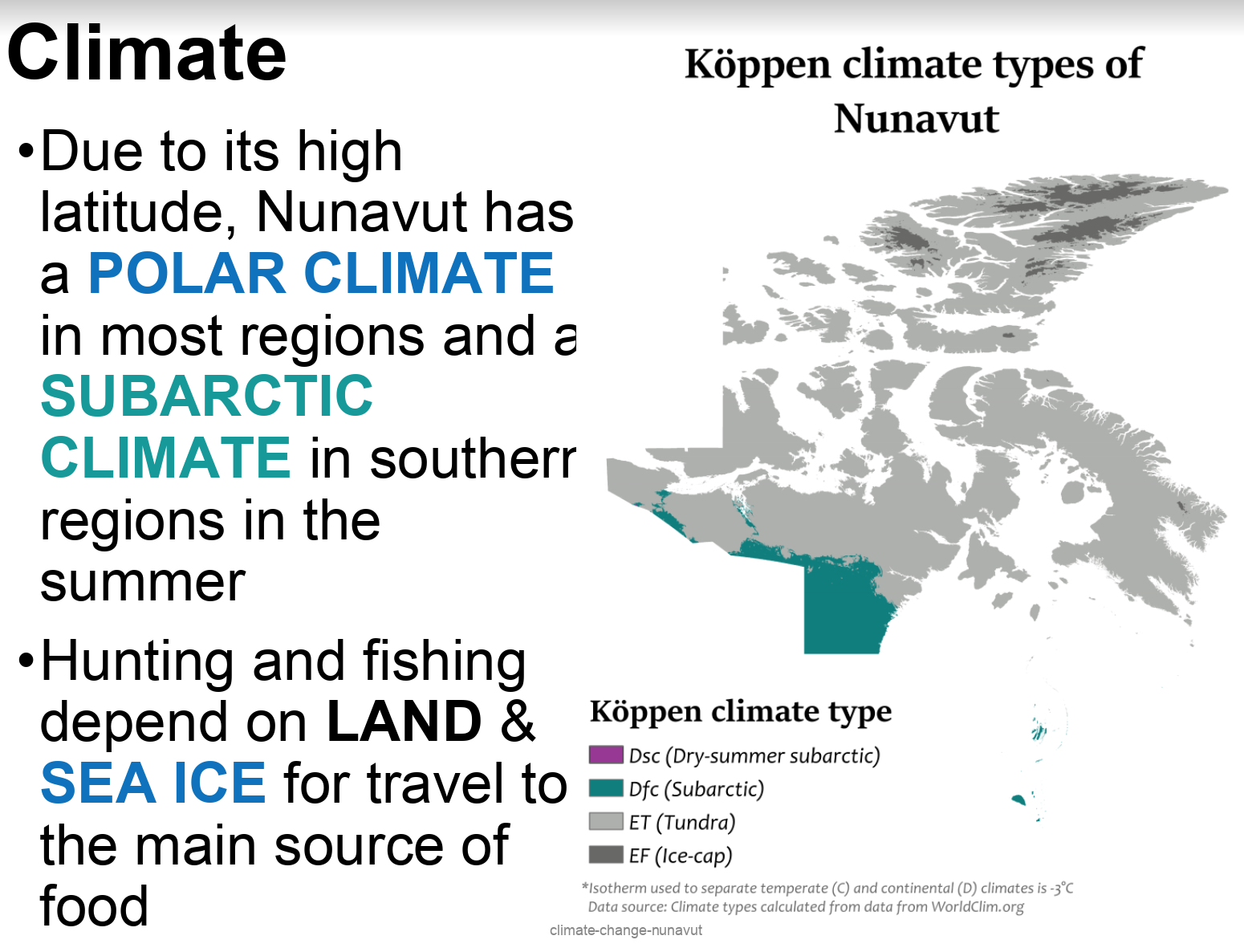The Arctic Climate
The climate of the Arctic is characterized by long, cold winters and short, cool summers. There is a large amount of variability in climate across the Arctic, but all regions experience extremes of solar radiation in both summer and winter.
Some parts of the Arctic are covered by ice sea ice, glacial ice or snow) year-round and nearly all parts of the Arctic experience long periods with some form of ice on the surface.
The Arctic Ocean
The Arctic consists of ocean that is largely surrounded by land. As such, the climate of much of the Arctic is moderated by the ocean water, which can never have a temperature below -2°C (28°F).
In winter, this relatively warm water, even though covered by the polar ice pack, keeps the North Pole from being the coldest place in the Northern Hemisphere, and it is also part of the reason that Antarctica is so much colder than the Arctic. In summer, the presence of the nearby water keeps coastal areas from warming as much as they might otherwise.

Did you know... the Köppen climate classification system was first published by the German-Russian climatologist Wladimir Köppen in 1884, with several later modification in 1918 and 1936!
Average January temperatures range from about -34°C to 0°C (-29 to +32°F), and winter temperatures can drop below -50°C (-58°F) over large parts of the Arctic.
Average July temperatures range from about -10 to +10°C (14 to 50°F), with some land areas occasionally exceeding 30°C (86°F) in summer.


Copyright © All Rights Reserved

